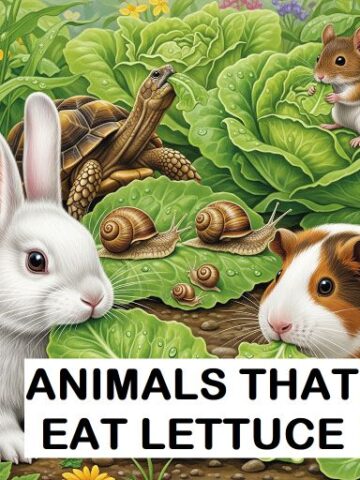Lettuce, a leafy green appreciated for its crisp texture and refreshing bite, isn’t just a staple in human salads—it serves as a favorite and sometimes irresistible treat for a vast array of animals. From backyard wildlife and household pets to garden invertebrates and unwelcome pests, the attraction of lettuce can create both delightful encounters and gardening challenges. This comprehensive article explores the diverse world of lettuce-eating animals, their dietary habits, ecological roles, and the implications for both caretakers and cultivators.
Post Contents
- Why Is Lettuce So Appealing?
- Animals That Eat Lettuce: From Mammals to Insects
- 🐇 Mammals That Eat Lettuce
- 🐦 Birds That Eat Lettuce
- 🐢 Reptiles That Eat Lettuce
- 🐛 Invertebrates That Eat Lettuce
- 🐒 Less Common Lettuce Eaters
- Ecological Impacts: The Double-Edged Sword
- Table: Animal Groups and Lettuce Consumption Patterns
- Signs of Animal Lettuce Damage in the Garden
- 🌿 Final Thoughts: Lettuce—A Universal Snack
Why Is Lettuce So Appealing?
Lettuce (Lactuca sativa) is mostly water, low in calories, and contains small amounts of fiber, vitamins, and minerals. Its mild flavor, soft texture, and high moisture content make it ideal for animals that thrive on fresh vegetation or need hydration from their food. Many herbivorous and omnivorous species are drawn to lettuce’s easy digestibility and satisfying crunch.
Sure! Here’s an article abouy “Animals That Eat Lettuce: From Mammals to Insects”, fully expanded and structured with detailed content, species behavior, and dietary insights.
Animals That Eat Lettuce: From Mammals to Insects
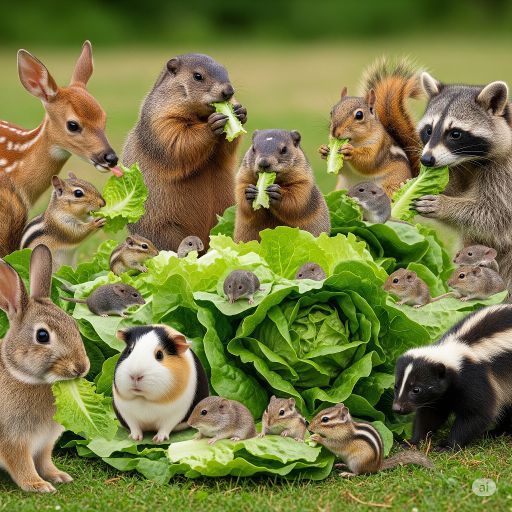
Lettuce—crisp, leafy, and tender—is not just a salad staple for humans. In the natural world, this humble vegetable is a magnet for a wide range of animals. Whether in backyard gardens, suburban greenhouses, or farms, lettuce often attracts a surprising array of mammals, birds, reptiles, and invertebrates. Some animals devour it for hydration, others for its fiber or sugars, and a few simply because it’s available and easy to eat.
This article dives deep into mammals that eat lettuce and also explores other animal groups that can’t resist its leafy charm. From adorable pets like rabbits and guinea pigs to opportunistic raccoons and even invasive slugs, lettuce is a universal treat—and sometimes a gardener’s worst nightmare.
🐇 Mammals That Eat Lettuce
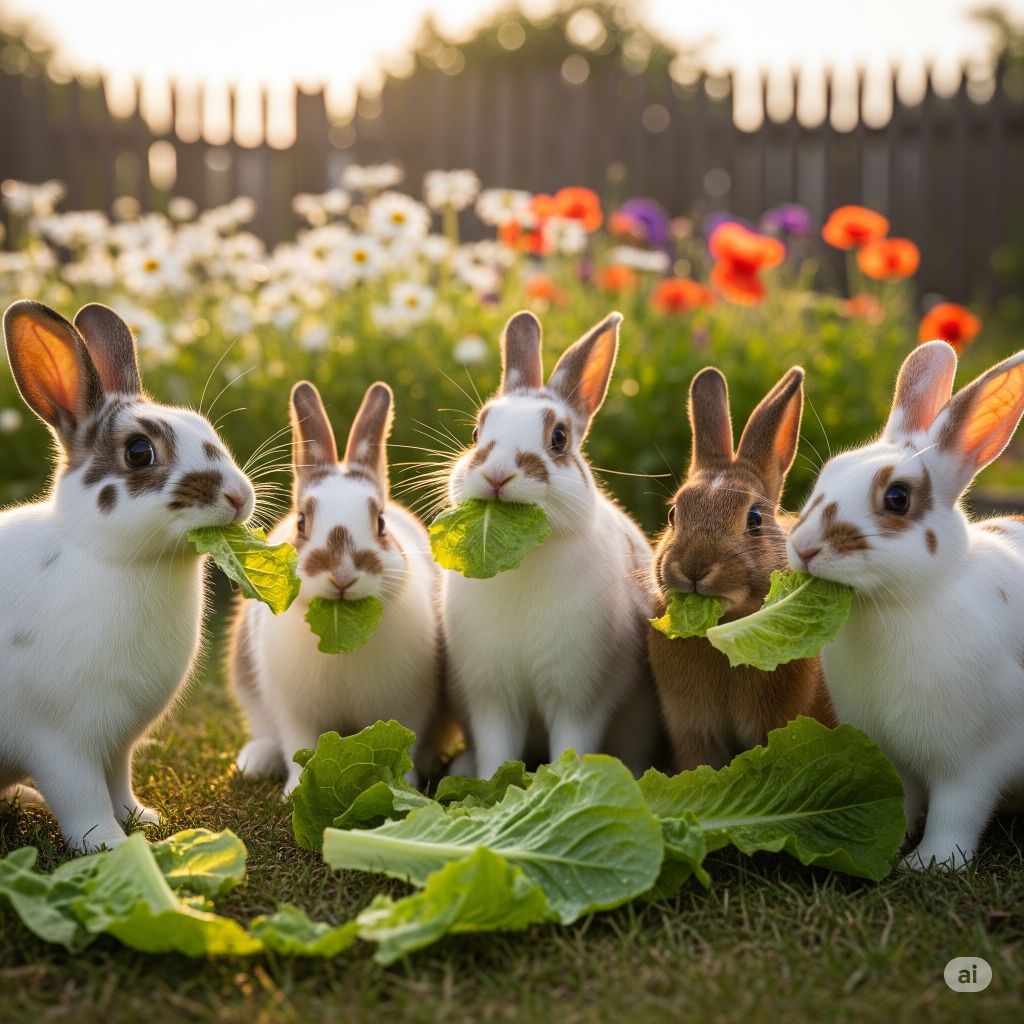
1. Rabbits
Rabbits are perhaps the most iconic lettuce eaters in the animal kingdom. Whether it’s the image of Bugs Bunny munching on a leafy head or a wild rabbit nibbling in a moonlit garden, these small mammals are famously fond of leafy greens.
- Wild Rabbits: Wild rabbits such as the Eastern Cottontail are opportunistic feeders. When they gain access to gardens, they often target lettuce due to its soft texture and palatability. In just one night, a few rabbits can clear a lettuce patch, leaving behind only stubs.
- Pet Rabbits: Domestic rabbits benefit from a varied diet of hay, vegetables, and occasional fruits. Lettuce, especially romaine, green leaf, and red leaf varieties, is a common treat. Iceberg lettuce, however, is discouraged because of its low nutritional value and high water content, which may cause digestive issues.
Note: A rabbit’s diet should consist of 80–90% hay. Lettuce should be an occasional supplement, not a primary food source.
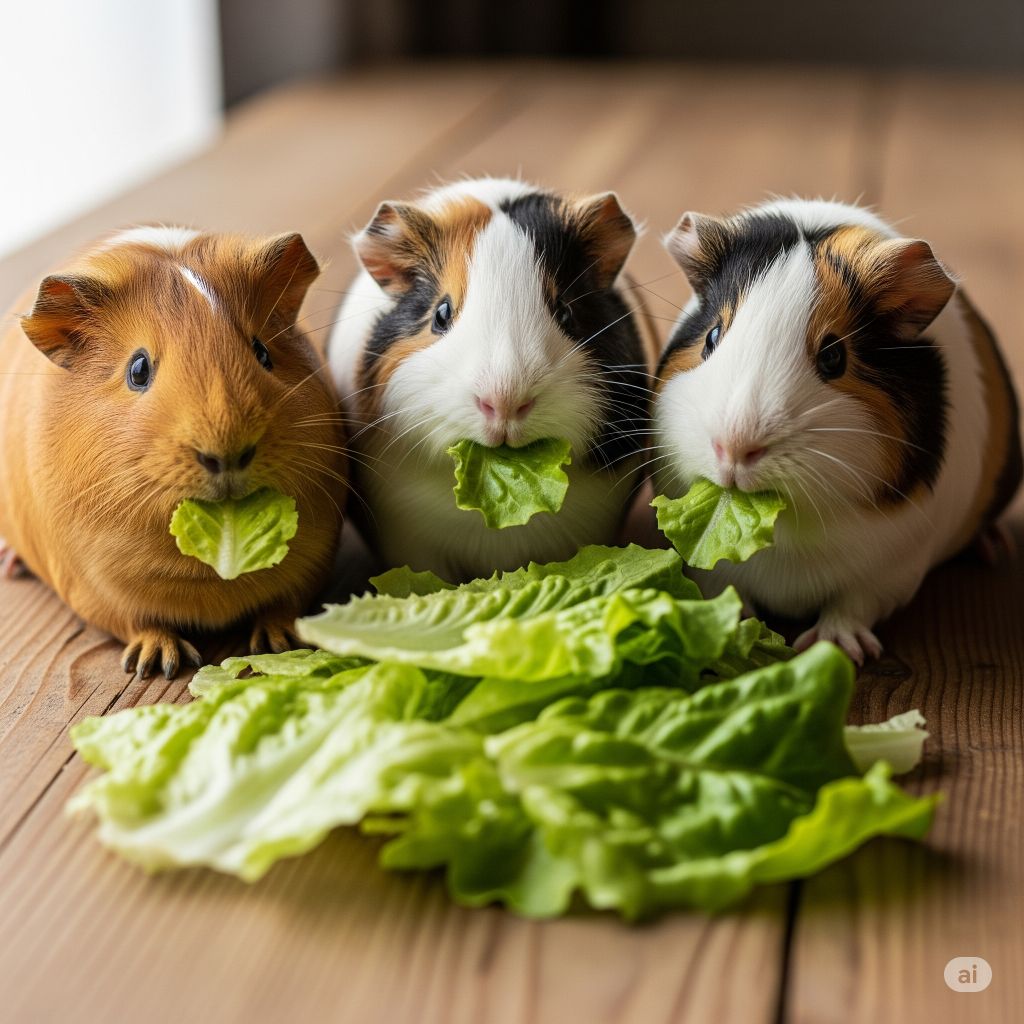
2. Guinea Pigs
Guinea pigs, like rabbits, are small herbivorous mammals that thrive on vegetable-rich diets. Lettuce offers hydration and essential nutrients—particularly when darker, nutrient-dense varieties are used.
- Vitamin C: Guinea pigs can’t synthesize vitamin C on their own, making leafy greens like romaine lettuce a helpful dietary addition.
- Avoid Iceberg: Iceberg lettuce contains little fiber and can cause diarrhea or bloating when fed in excess.
Feeding Tip: Offer a mix of lettuce with bell peppers, cilantro, and other vitamin C-rich vegetables to maintain balanced nutrition.
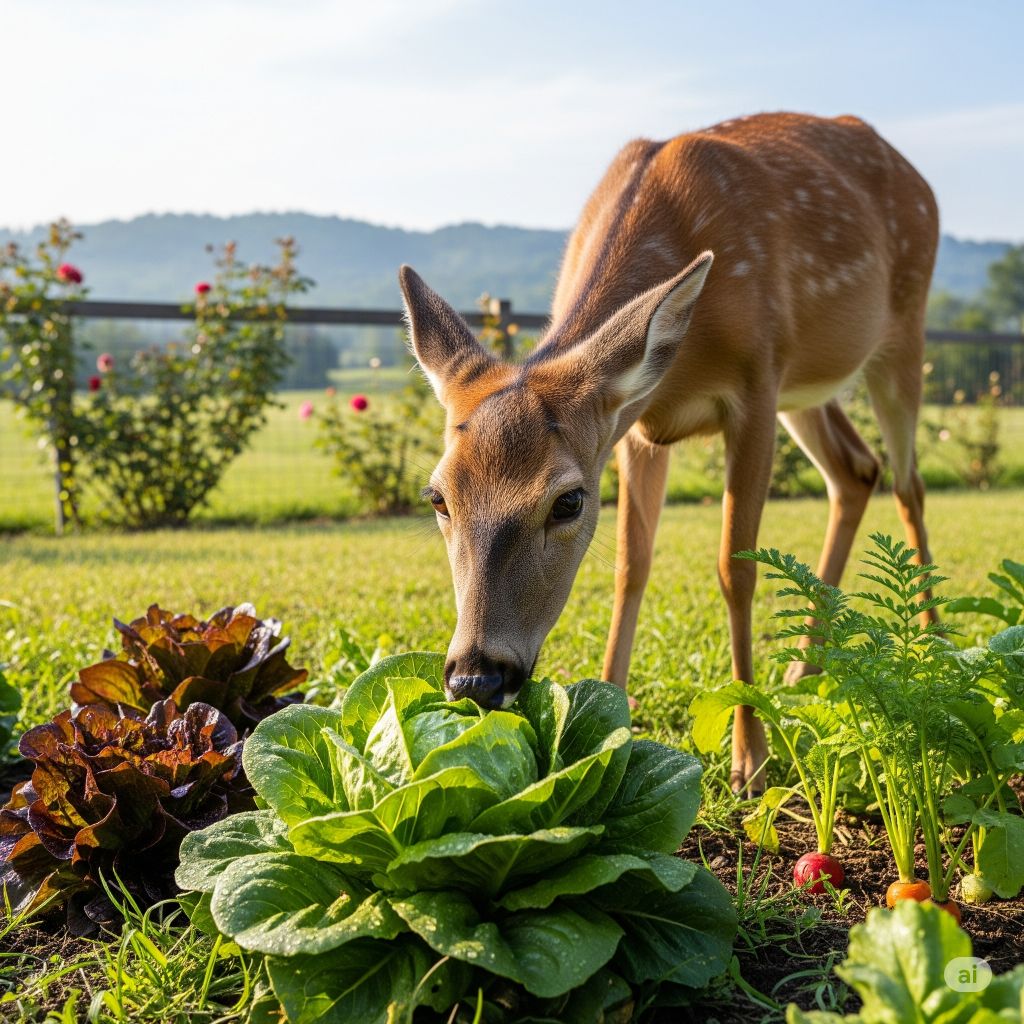
3. Deer
In suburban areas where forests meet neighborhoods, deer frequently wander into gardens. Lettuce is one of their favorite snacks.
- White-tailed Deer: These graceful mammals use their keen sense of smell to locate tender greens. Lettuce heads provide an easy source of moisture and carbohydrates.
- Signs of Visit: Gardeners may notice hoof prints, nibbled leaves, and missing plants after a deer’s nighttime visit.
Deterrent Advice: Use tall fences, motion-activated lights, or deer-repelling sprays to keep lettuce beds safe.
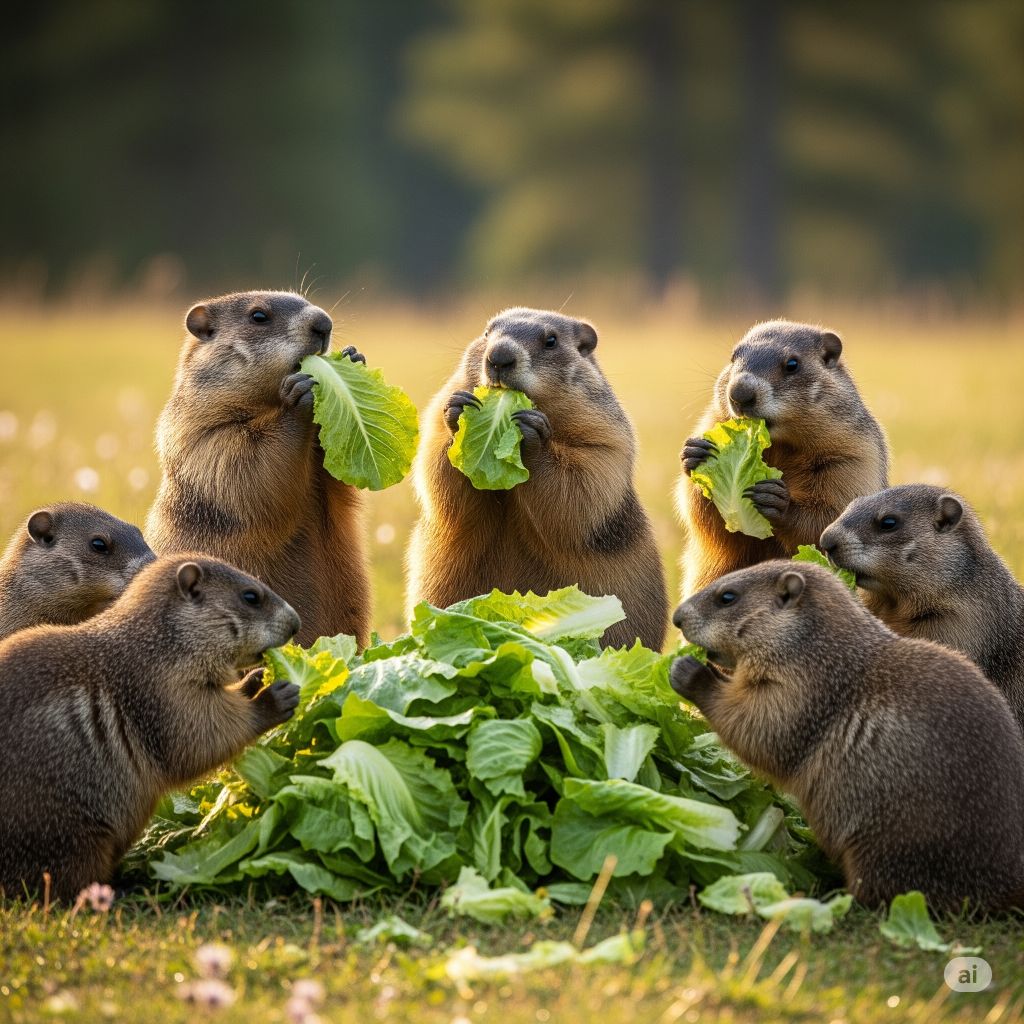
4. Groundhogs and Woodchucks
Also known as marmots, groundhogs are persistent garden raiders. Lettuce is among their top targets.
- Destructive Eating Habits: They not only eat leaves but may pull up the entire plant. Their burrowing tendencies also disrupt root systems.
- Garden Impact: A single groundhog can decimate a small backyard garden in just a few days.
Tip: Raised garden beds with underground barriers help reduce groundhog access.
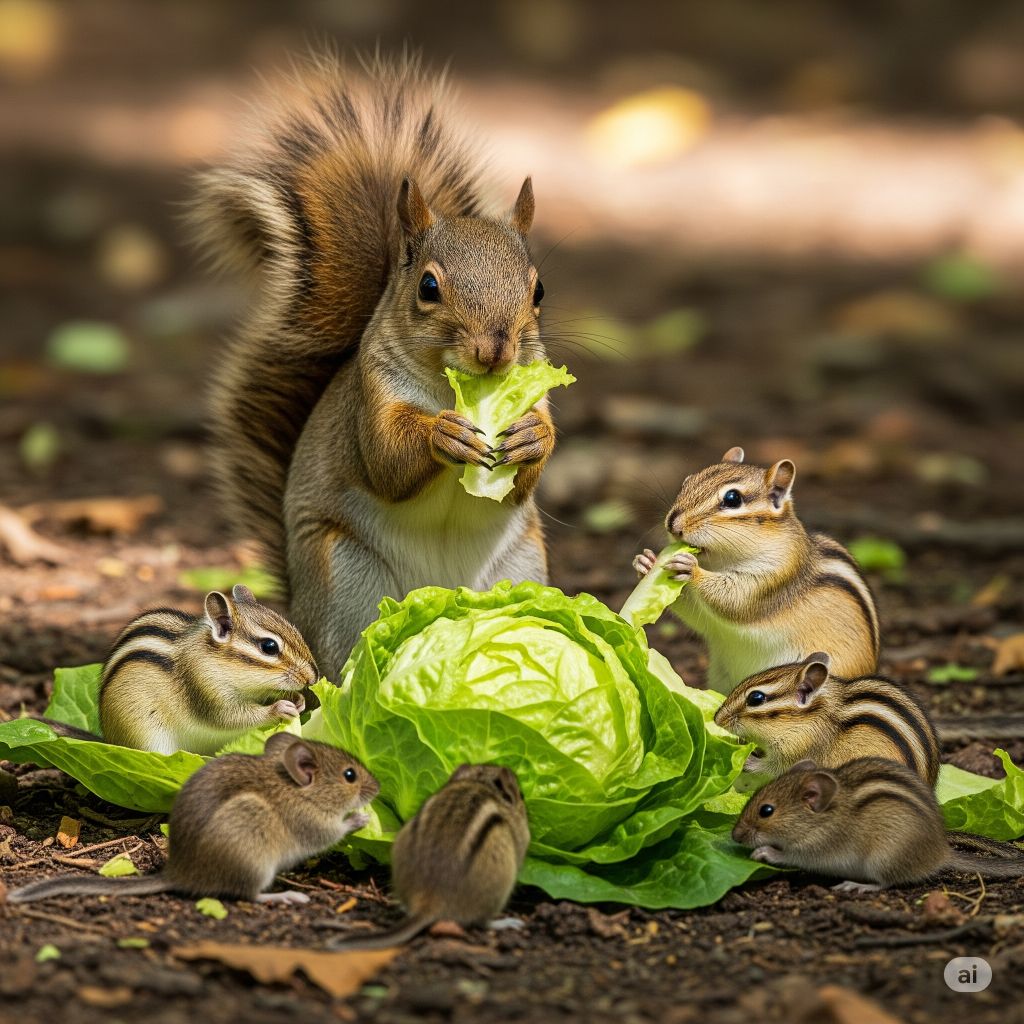
5. Squirrels, Chipmunks, and Voles
Though primarily seed and nut eaters, these small rodents won’t say no to leafy greens when available.
- Squirrels and Chipmunks: These agile climbers occasionally raid vegetable beds, particularly when fruits or nuts are scarce.
- Voles: These burrowing rodents often feed on plant roots and leaves, including lettuce, especially in cooler climates.
Preventive Measures: Netting, garden cages, and spicy sprays can deter rodents from lettuce beds.
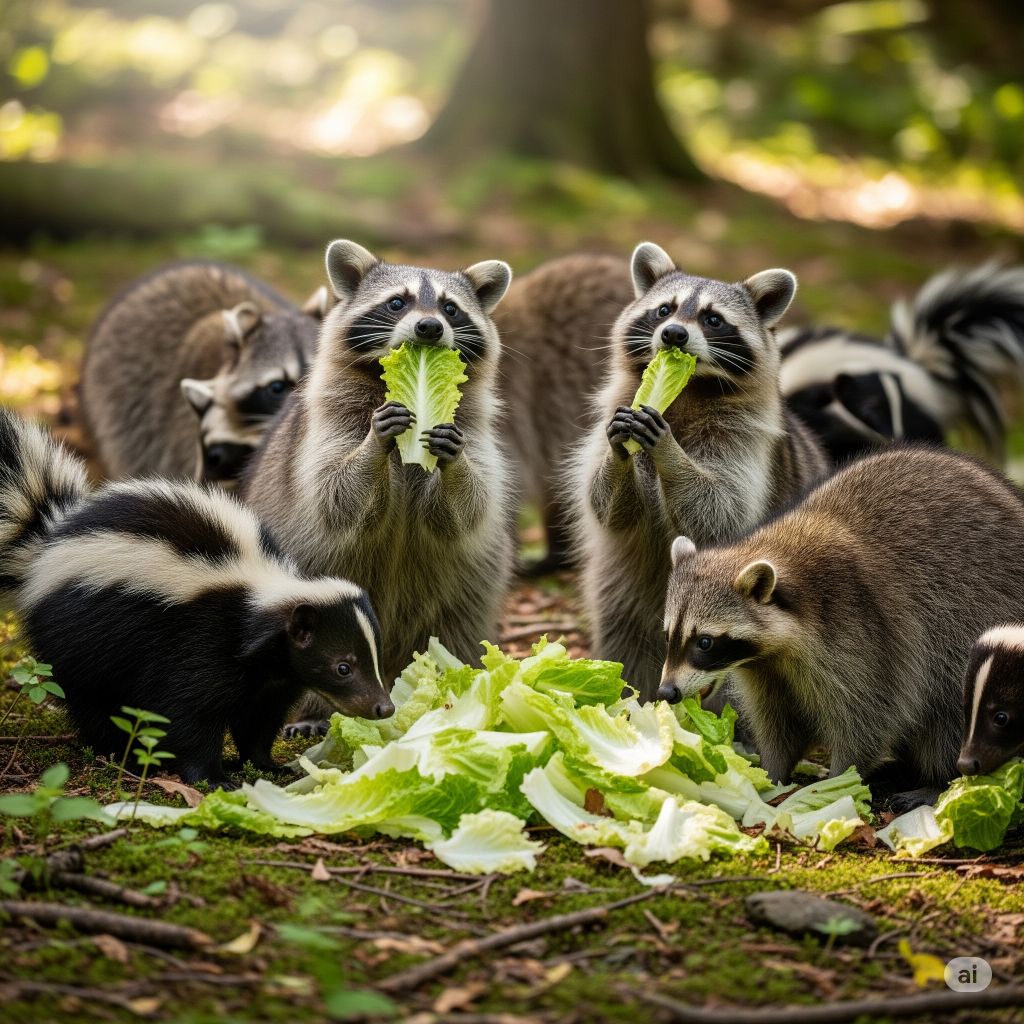
6. Skunks and Raccoons
Although not strictly herbivorous, these animals are opportunistic feeders and will eat lettuce when it’s accessible.
- Skunks: Primarily insectivores, they may nibble lettuce while foraging for grubs.
- Raccoons: Known for their dexterity, raccoons can easily climb into raised beds or flip over containers. They often damage whole lettuce heads while foraging.
Garden Tip: Keep compost sealed and harvest lettuce frequently to reduce attraction.
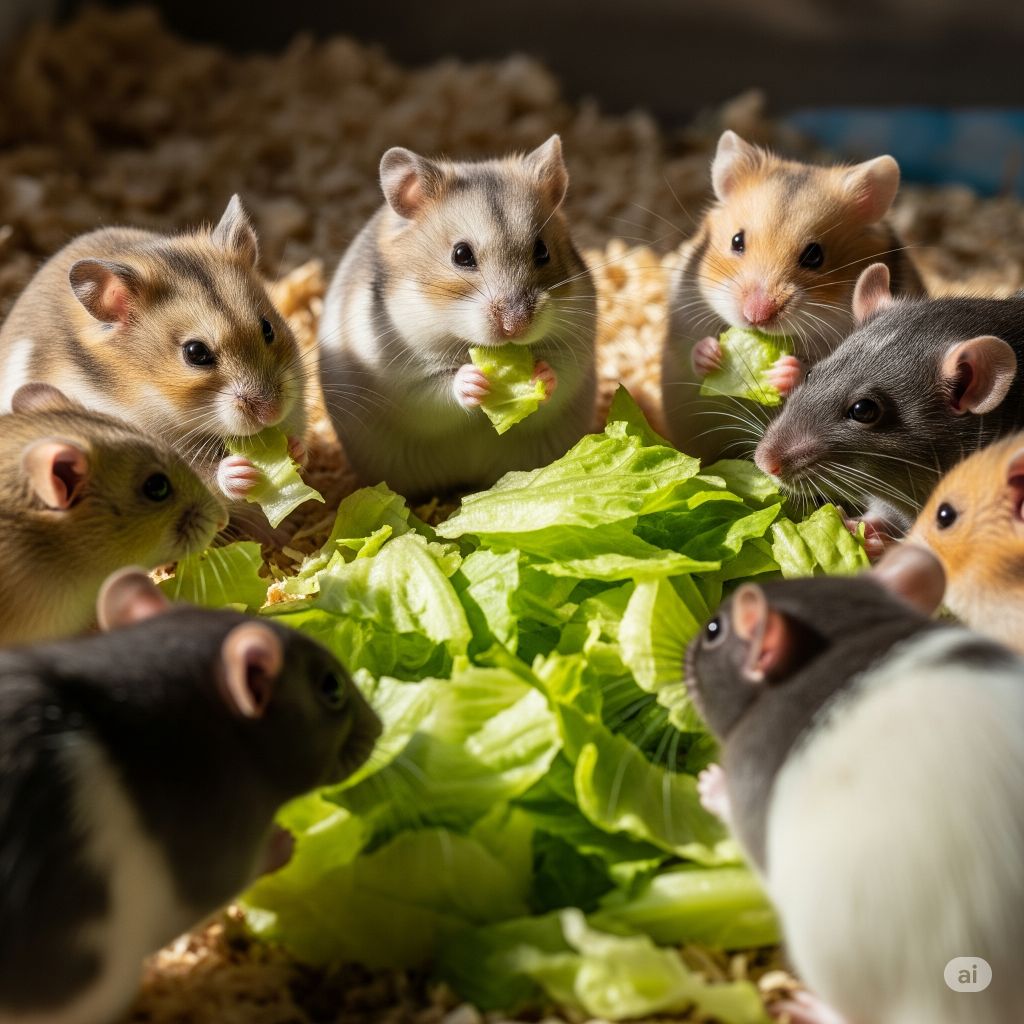
7. Hamsters and Domestic Rats
In small quantities, lettuce can be a safe snack for rodents kept as pets.
- Hamsters: Enjoy lettuce for hydration, but too much can lead to loose stools.
- Rats: Domesticated rats can eat most leafy greens, including lettuce, in moderation.
Feeding Note: Always wash lettuce thoroughly before offering it to small pets to avoid pesticides.
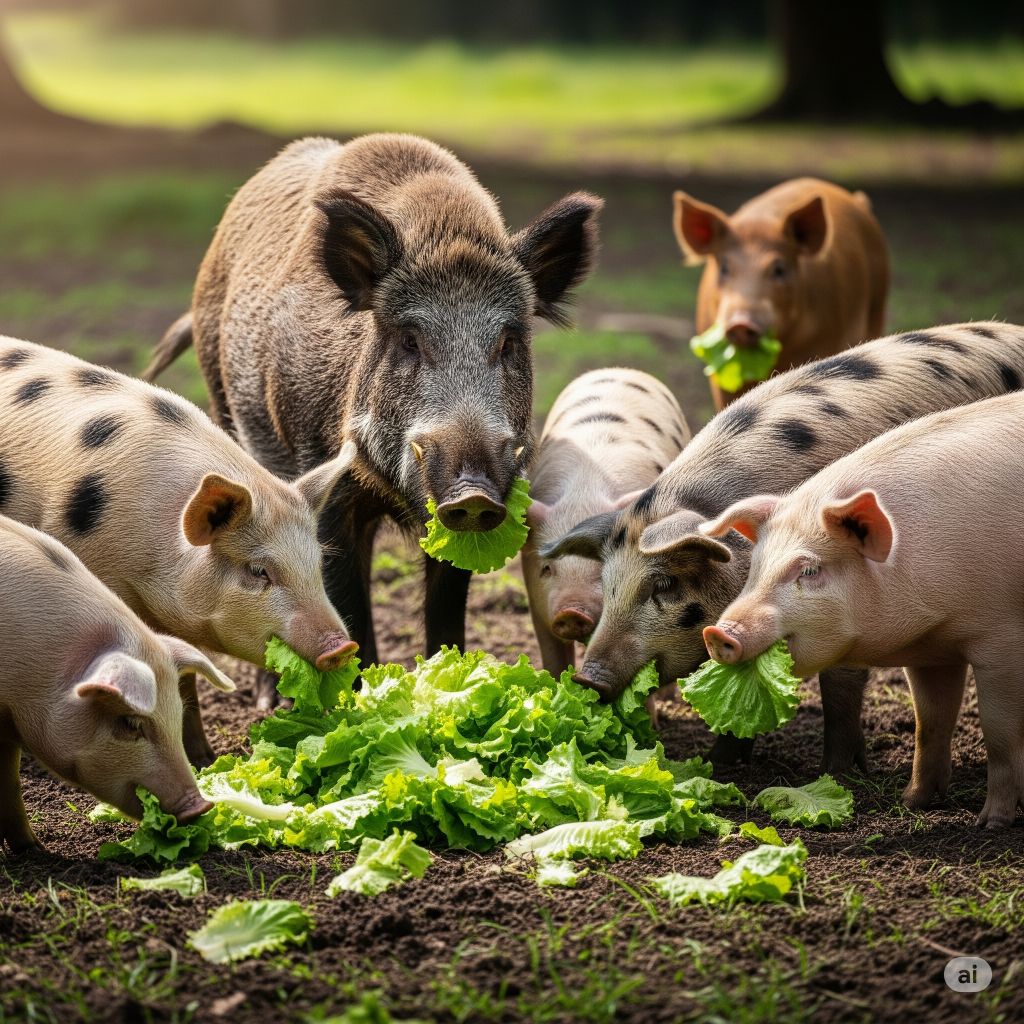
8. Pigs (Wild and Domestic)
Pigs are natural foragers and eat a wide range of vegetation, including lettuce.
- Domestic Pigs: Lettuce is often included as part of a diverse diet of grains, vegetables, and fruits.
- Wild Boars: In the wild, they root around for plant matter and will happily consume lettuce if they come across garden beds.
Interesting Fact: Pigs’ strong snouts can overturn garden beds, not just for eating lettuce, but also to find insects underneath.
🐦 Birds That Eat Lettuce
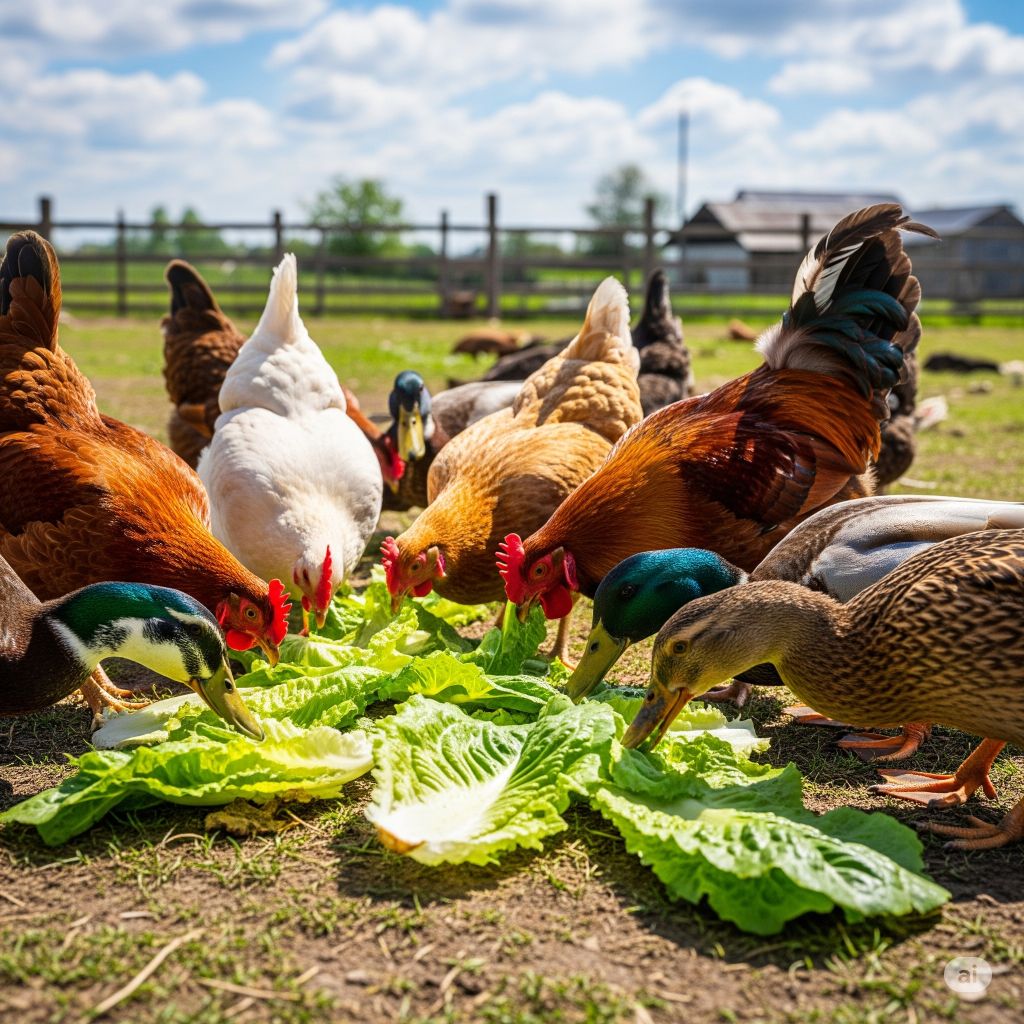
9. Chickens and Ducks
These backyard birds love pecking at fresh greens.
- Chickens: Lettuce can be a healthy treat when mixed with other greens. Avoid iceberg lettuce, as its high water content can lead to runny droppings.
- Ducks: Often fed leafy greens as supplemental forage, ducks benefit from lettuce’s hydration, especially in summer.
Feeding Tip: Chop lettuce into manageable pieces to prevent choking and encourage even feeding.
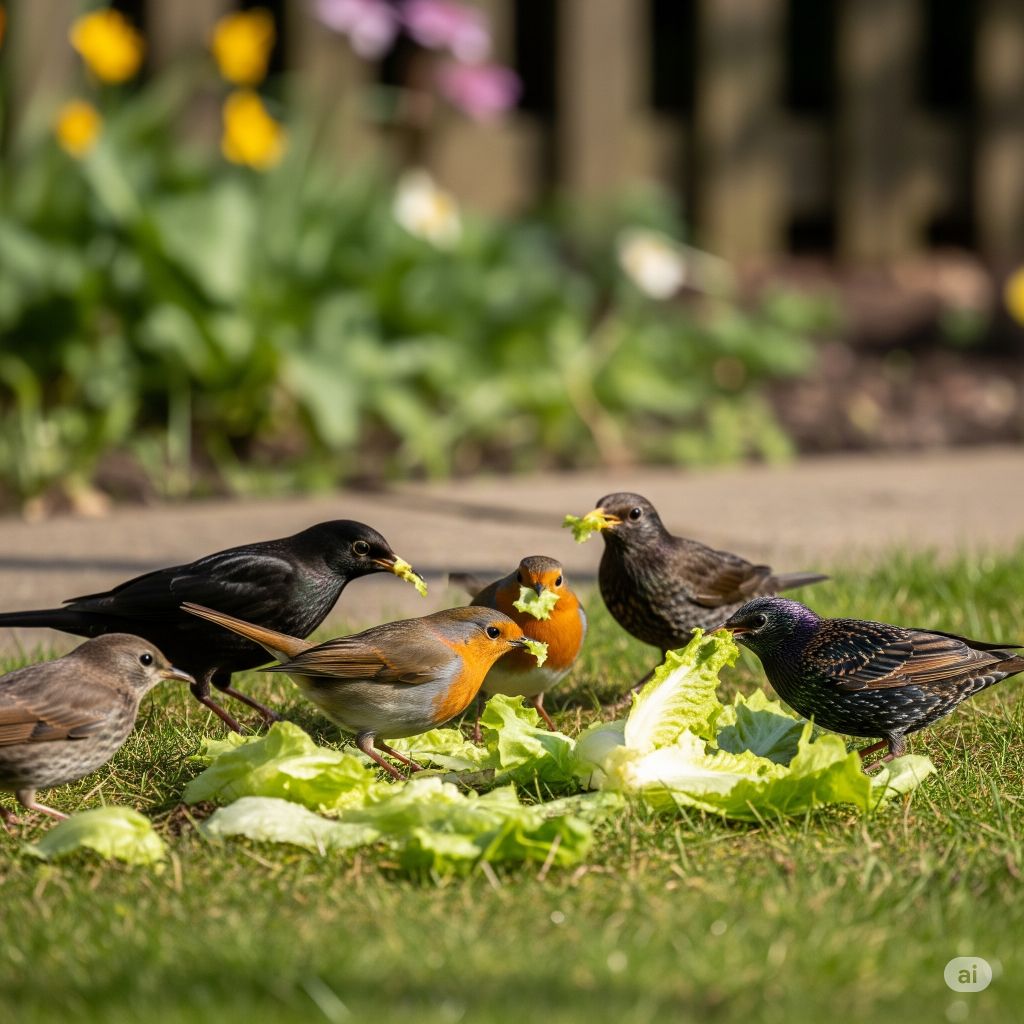
10. Wild Birds
Some ground-foraging birds like sparrows, pigeons, and blackbirds will eat garden vegetables including lettuce.
- Attraction: Lettuce attracts wild birds especially during dry months when other green vegetation is scarce.
- Signs of Feeding: Pecked leaves with irregular edges and bird droppings are common indicators.
🐢 Reptiles That Eat Lettuce
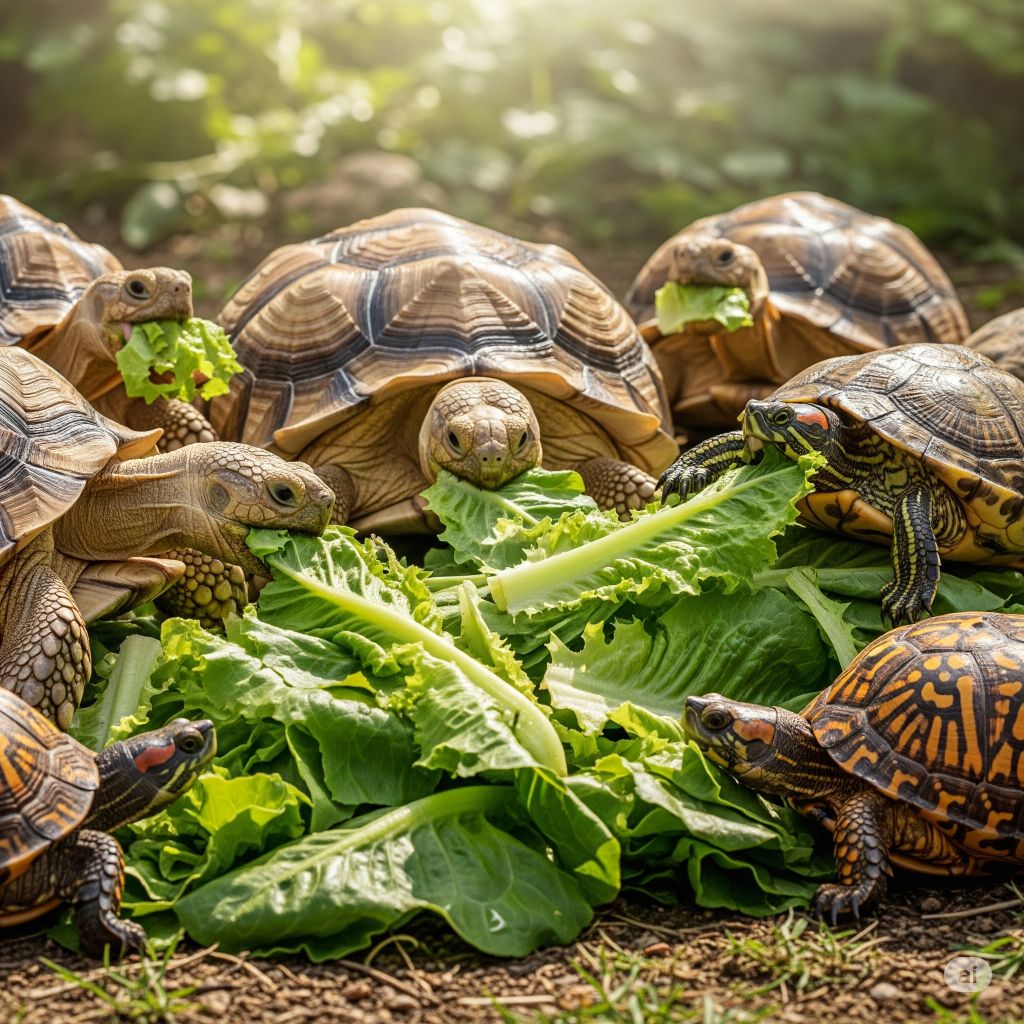
11. Tortoises and Turtles
Tortoises and many terrestrial turtles rely heavily on plant matter for sustenance.
- Lettuce Preferences: Romaine, red leaf, and green leaf lettuce are preferred. Iceberg is discouraged due to its lack of calcium and vitamins.
- Hydration: Lettuce provides moisture, especially important for desert species like sulcata tortoises.
Balanced Diet: Combine lettuce with dandelion greens, kale, and squash for optimal nutrition.
🐛 Invertebrates That Eat Lettuce
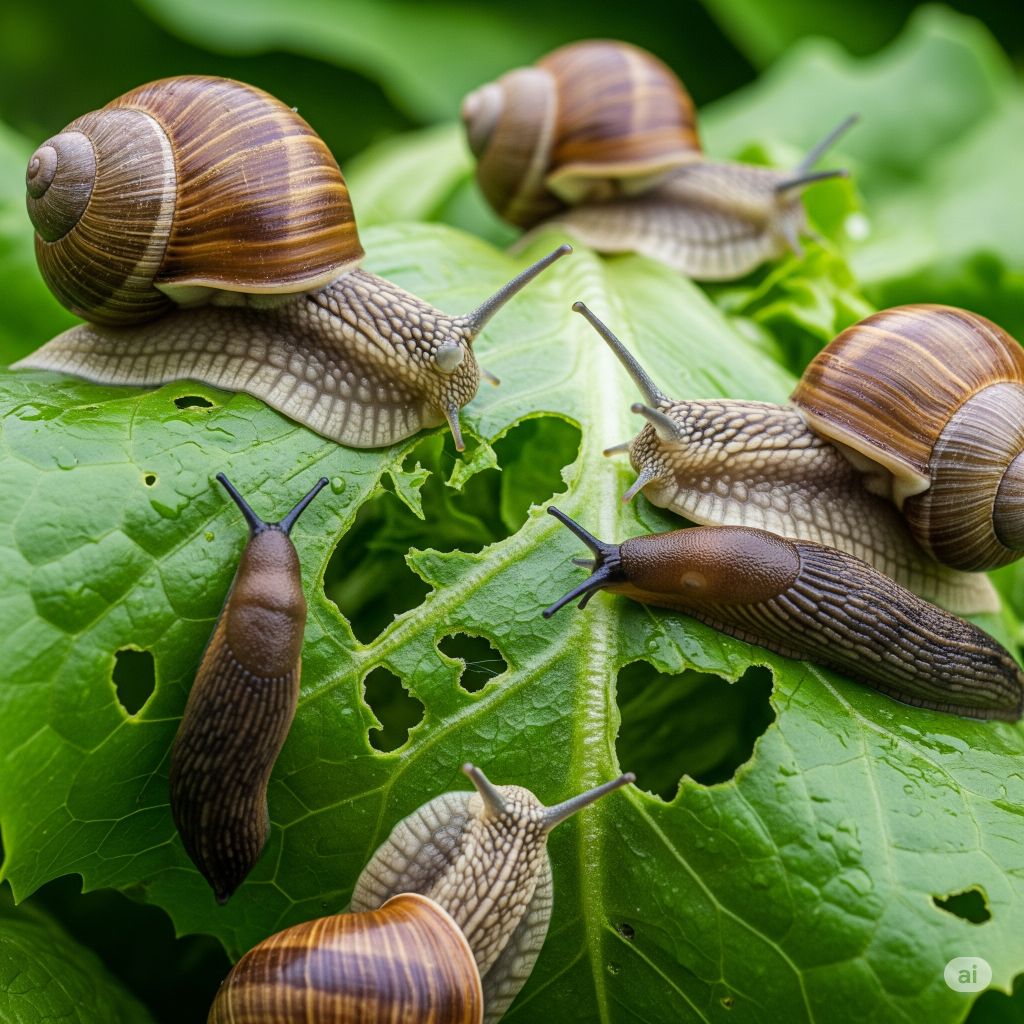
12. Snails and Slugs
These are among the most destructive lettuce feeders in gardens.
- Activity: Most active at night or in damp conditions.
- Damage: Leave behind holes, shredded leaves, and slimy trails.
Control Tip: Beer traps, diatomaceous earth, and hand-picking are effective slug control methods.
13. Caterpillars and Insect Larvae
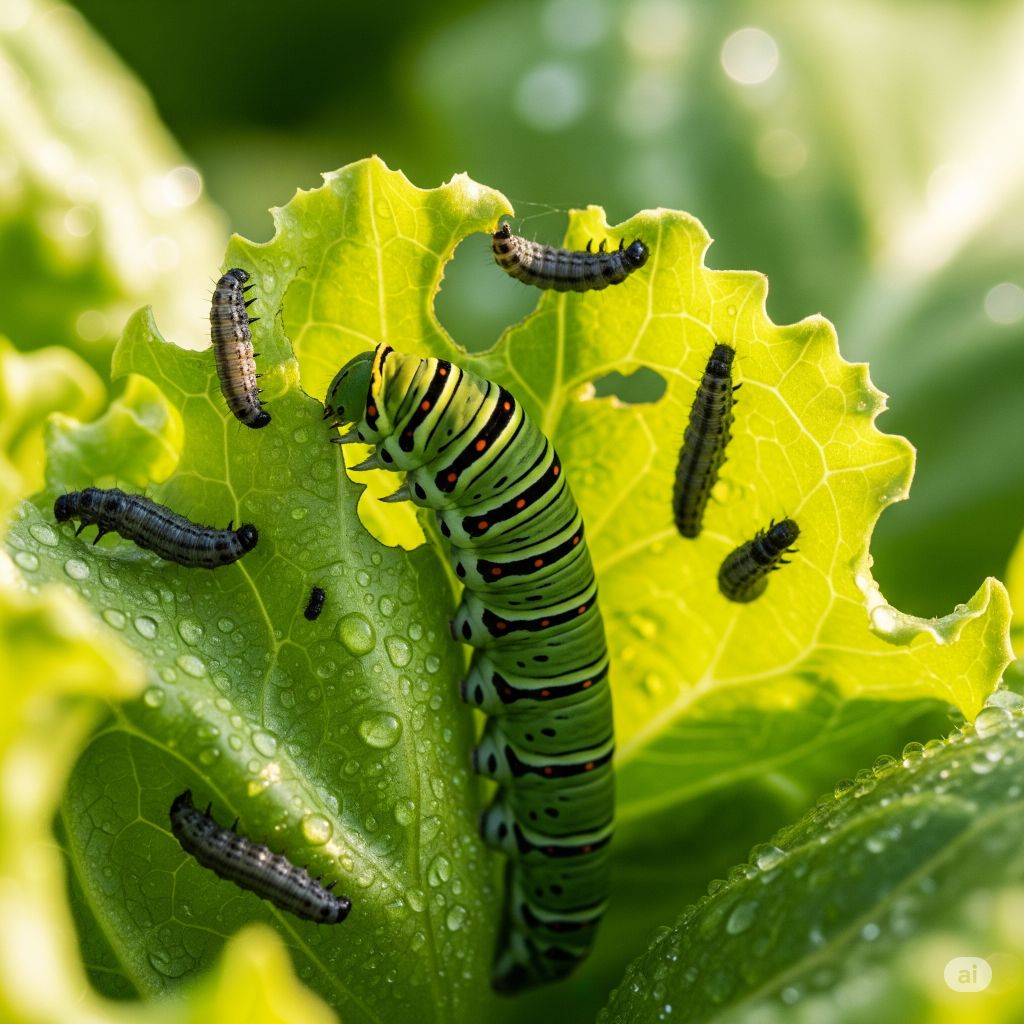
Several species of moth and butterfly larvae feed on lettuce.
- Common Culprits:
- Cabbage loopers
- Armyworms
- Cutworms
- Signs of Infestation: Ragged leaves, droppings (frass), and visible larvae.
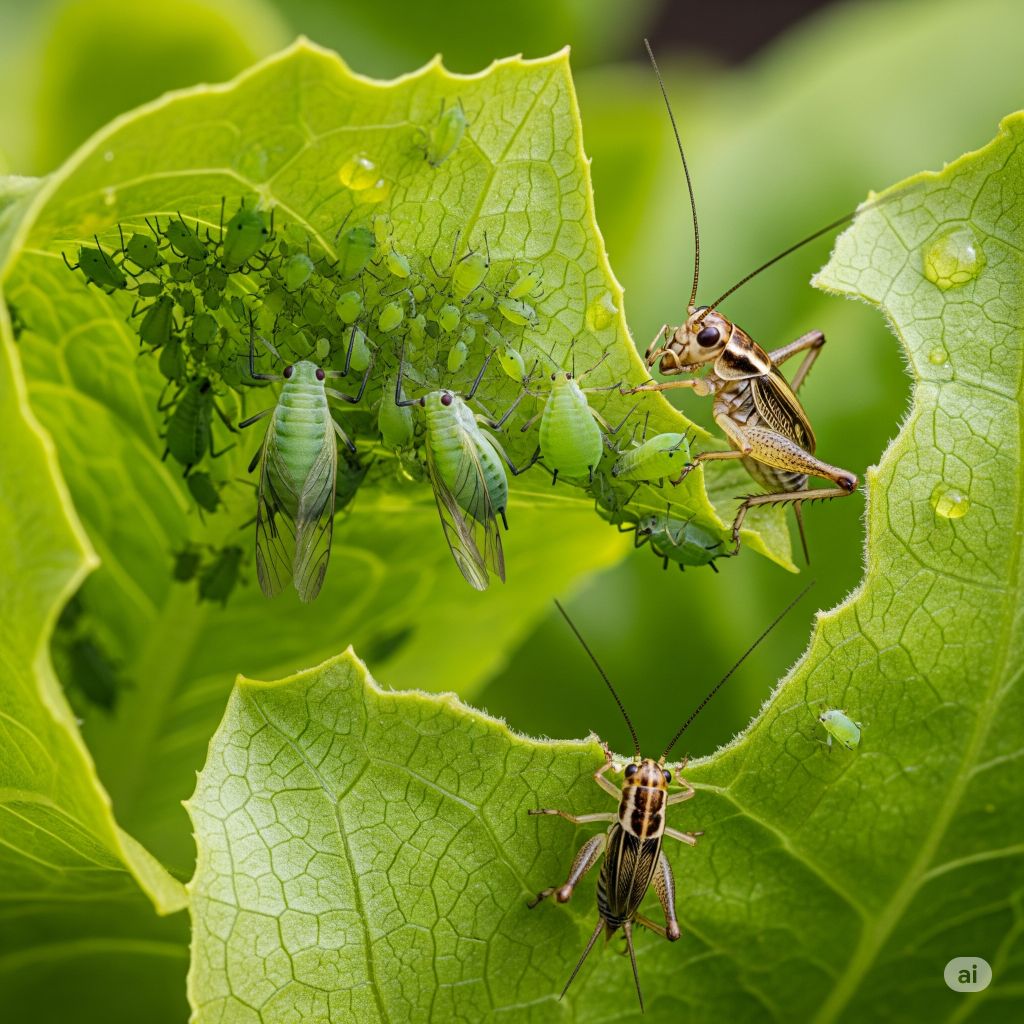
14. Aphids and Crickets
- Aphids: These sap-sucking insects cause curling leaves, yellow spots, and can transmit plant diseases.
- Crickets: Known to chew holes in lettuce, especially in warm, dry environments.
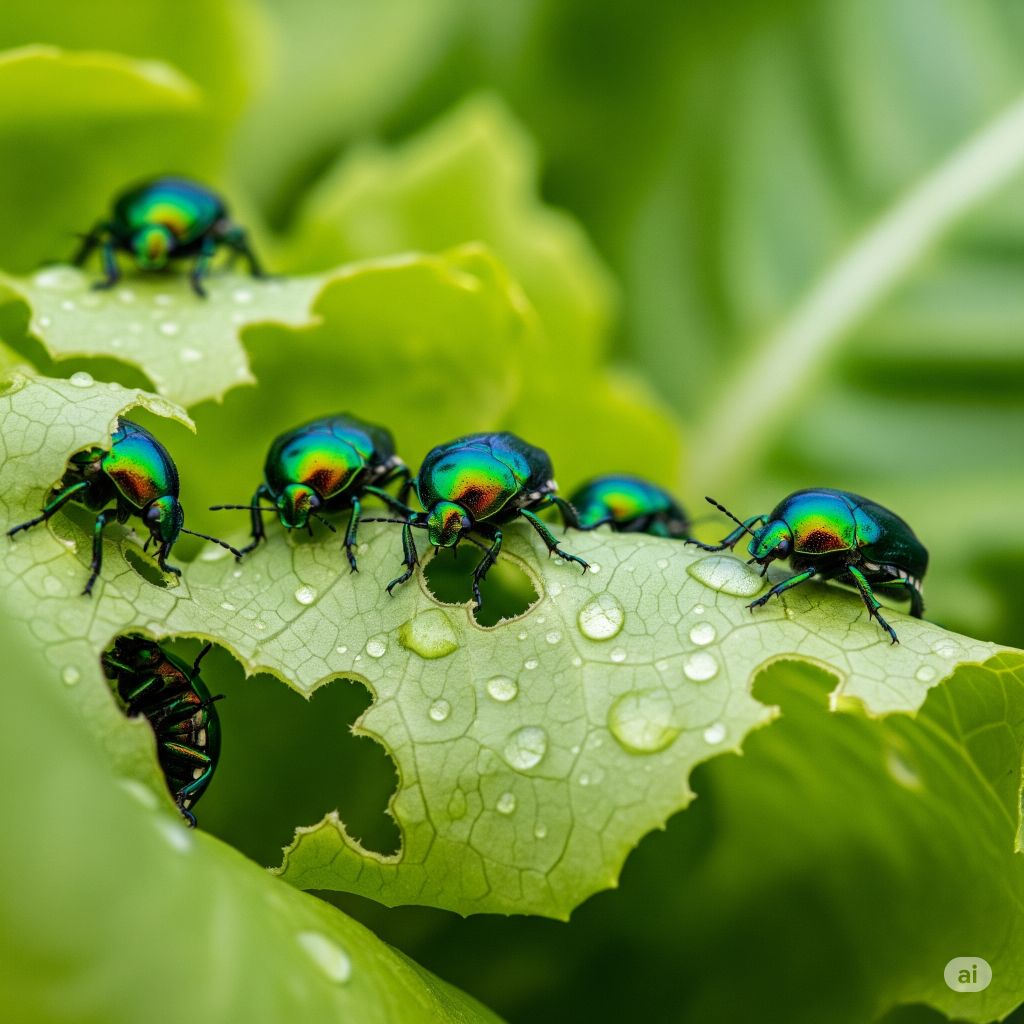
15. Beetles
Certain beetles target lettuce in various stages:
- Flea Beetles: Tiny beetles that leave behind a “shotgun” pattern of holes.
- Root Maggots: Larvae of certain beetles eat lettuce roots, causing wilting or plant death.
🐒 Less Common Lettuce Eaters
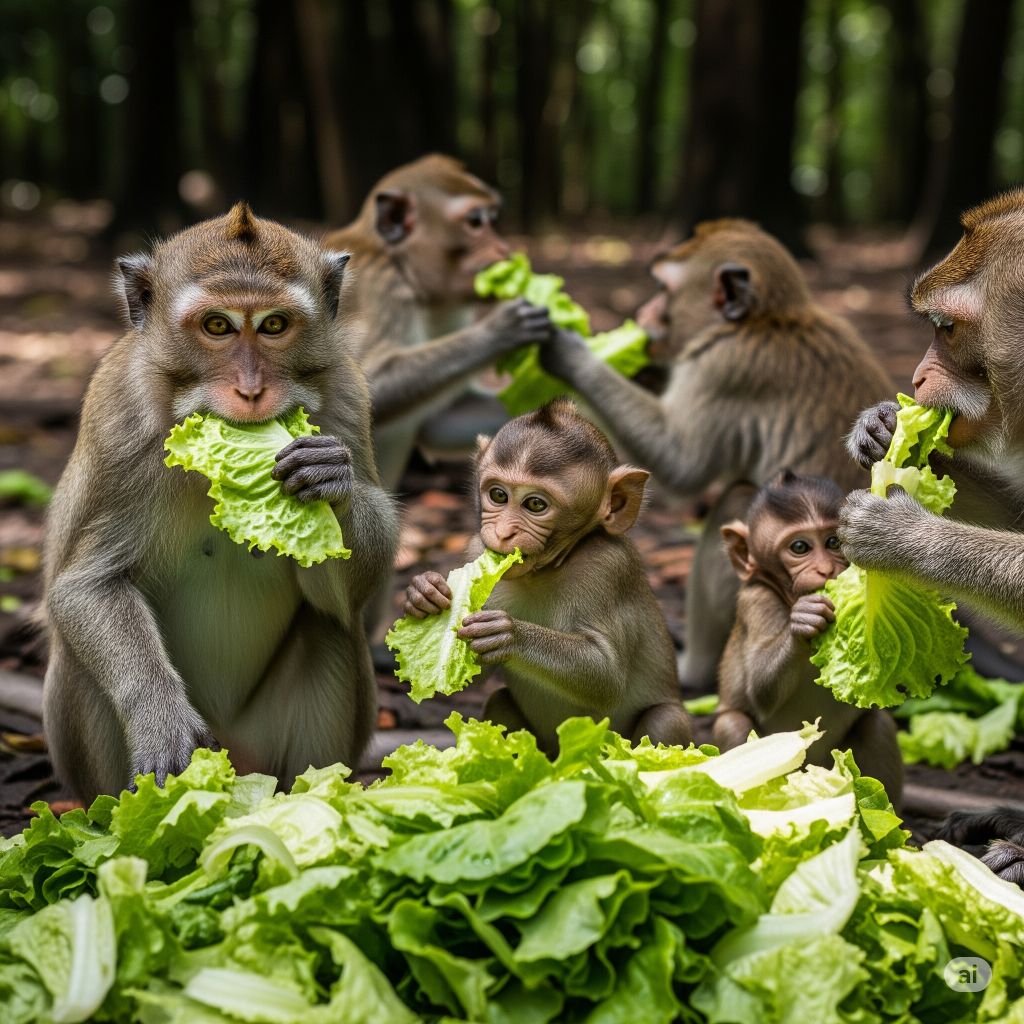
16. Monkeys
In countries where monkeys live near human settlements (India, Southeast Asia, parts of Africa), they often raid farms and gardens.
- Behavior: Urban monkeys can strip entire vegetable beds, including lettuce, in minutes.
- Species: Rhesus macaques and vervet monkeys are particularly notorious for garden raids.
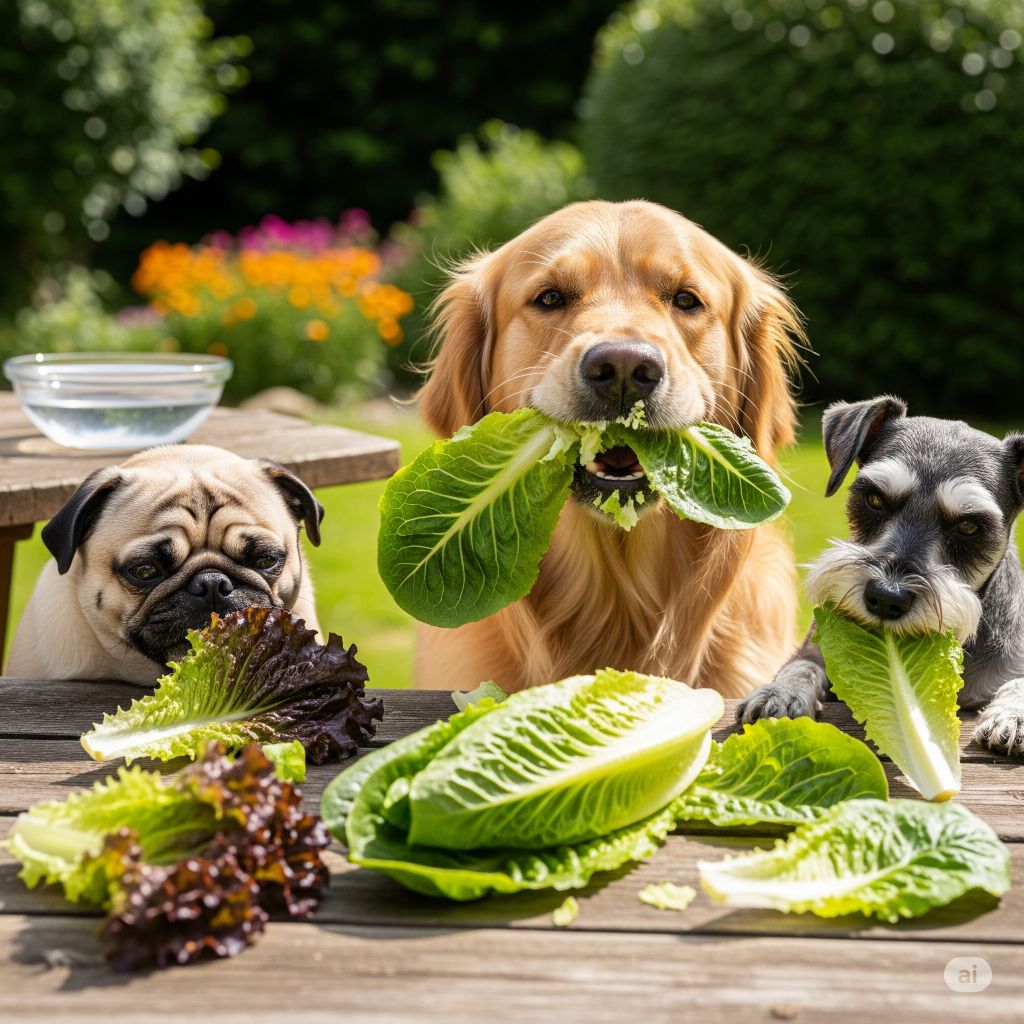
17. Dogs
Dogs are not natural lettuce eaters but may nibble out of curiosity or mimicry.
- Occasional Snack: A bit of lettuce in a dog’s bowl isn’t harmful and may help with digestion.
- Precaution: Chop into small pieces and wash thoroughly.
Ecological Impacts: The Double-Edged Sword
While feeding lettuce to pets and wildlife may seem harmless, overreliance or lack of dietary variety can lead to nutritional imbalances:
- Rabbits, guinea pigs, and tortoises require a mix of vegetables and hay for proper health.
- Lettuce as a garden crop is highly vulnerable to pest damage, requiring gardeners to practice integrated pest management—physical barriers, plant rotation, and natural predators can help mitigate infestations.
- Feeding wild animals with garden lettuce repeatedly can increase their habituation to human spaces, sometimes putting them at risk.
Table: Animal Groups and Lettuce Consumption Patterns
| Animal Group | Examples | Lettuce Role | Special Considerations |
|---|---|---|---|
| Mammals | Rabbits, deer, guinea pigs, groundhogs, squirrels, chipmunks, raccoons, skunks, pigs | Treat, forage, or supplement | Prefer dark leafy types; avoid too much iceberg lettuce for health |
| Birds | Chickens, ducks, some wild birds | Treat/supplement | Best in moderation, fresh and clean |
| Reptiles | Tortoises, turtles | Diet staple or treat | Darker varieties offer better nutrition |
| Invertebrates | Snails, slugs, caterpillars, aphids, crickets | Natural forage/pest | Control necessary for gardeners |
| Others | Monkeys, dogs, hamsters | Occasional treat | Monitor for adverse effects or allergies |
Signs of Animal Lettuce Damage in the Garden
Identifying the animal responsible for garden damage helps with targeted intervention:
- Clean-edged bites and tall plants nibbled: Deer.
- Ragged edges, entire stems eaten, evidence of burrows: Rabbits or groundhogs.
- Slime trails, irregular holes, shiny leaves: Snails and slugs.
- Multiple tiny holes, presence of larvae or frass: Caterpillars or beetles.
- Crushed leaves, whole plants uprooted: Raccoons or pigs.
Signs of Herbivore Damage
Each animal leaves distinct evidence of its feeding habits:
- Deer: Torn leaves, large bite marks, hoof prints.
- Rabbits: Clean-cut edges on leaves, small round droppings.
- Squirrels: Gnawed edges, disturbed soil.
- Birds: Peck marks, dislodged seedlings.
- Rodents: Frayed stems, small trails, gnawed leaves.
- Groundhogs: Wide-ranging damage, large burrows near the garden.
Lettuce: A Universal Magnet
Lettuce attracts animals due to its texture, moisture, and taste.
- Young Shoots: Particularly appealing because of tenderness and higher nitrogen content.
- Mature Leaves: Still targeted but may develop bitter compounds that deter some animals.
Encouraging Beneficial Wildlife
Lettuce gardens don’t just attract pests; they can also support helpful species:
- Ladybugs: Feed on aphids.
- Praying Mantises: Prey on caterpillars and other pests.
- Beneficial Birds and Insects: Keep the ecosystem balanced.
To encourage them:
- Plant flowers and herbs.
- Avoid broad-spectrum pesticides.
- Provide water and shelter.
Balancing Protection and Biodiversity
Prevention Strategies:
- Use fencing and cloches.
- Practice companion planting.
- Rotate crops to reduce predictability.
- Encourage beneficial insects and birds.
Reactive Solutions:
- Monitor damage and identify pests.
- Apply organic repellents.
- Use traps or humane deterrents if necessary.
Seasonal Considerations
- Spring: Early growth is vulnerable. Use protective barriers.
- Summer: High foraging activity. Reinforce defenses.
- Autumn: Wildlife preps for winter; increased feeding.
- Winter: Fewer pests, but some scavengers still active.
🌿 Final Thoughts: Lettuce—A Universal Snack
Lettuce is a surprisingly popular food among many animal species—from herbivorous mammals and backyard birds to garden-invading insects. While some consume it as a primary food source, others do so opportunistically. Understanding which animals are attracted to lettuce can help pet owners plan diets and gardeners protect their crops.
Whether you’re feeding your guinea pig, observing deer in your backyard, or battling a slug invasion, remember: the crisp appeal of lettuce is nearly universal across the animal kingdom.
Citations:
What creature is eating the lettuce in my greenhouse?
https://kids.britannica.com/students/article/animal/272874
Ultimate Guide to What’s Eating Your Green Leaf Lettuce 🐰

94% of pet owners say their animal pal makes them smile more than once a day. In 2007, I realized that I was made for saving Animals. My father is a Vet, and I think every pet deserves one. I started this blog, “InPetCare”, in 2019 with my father to enlighten a wider audience.
